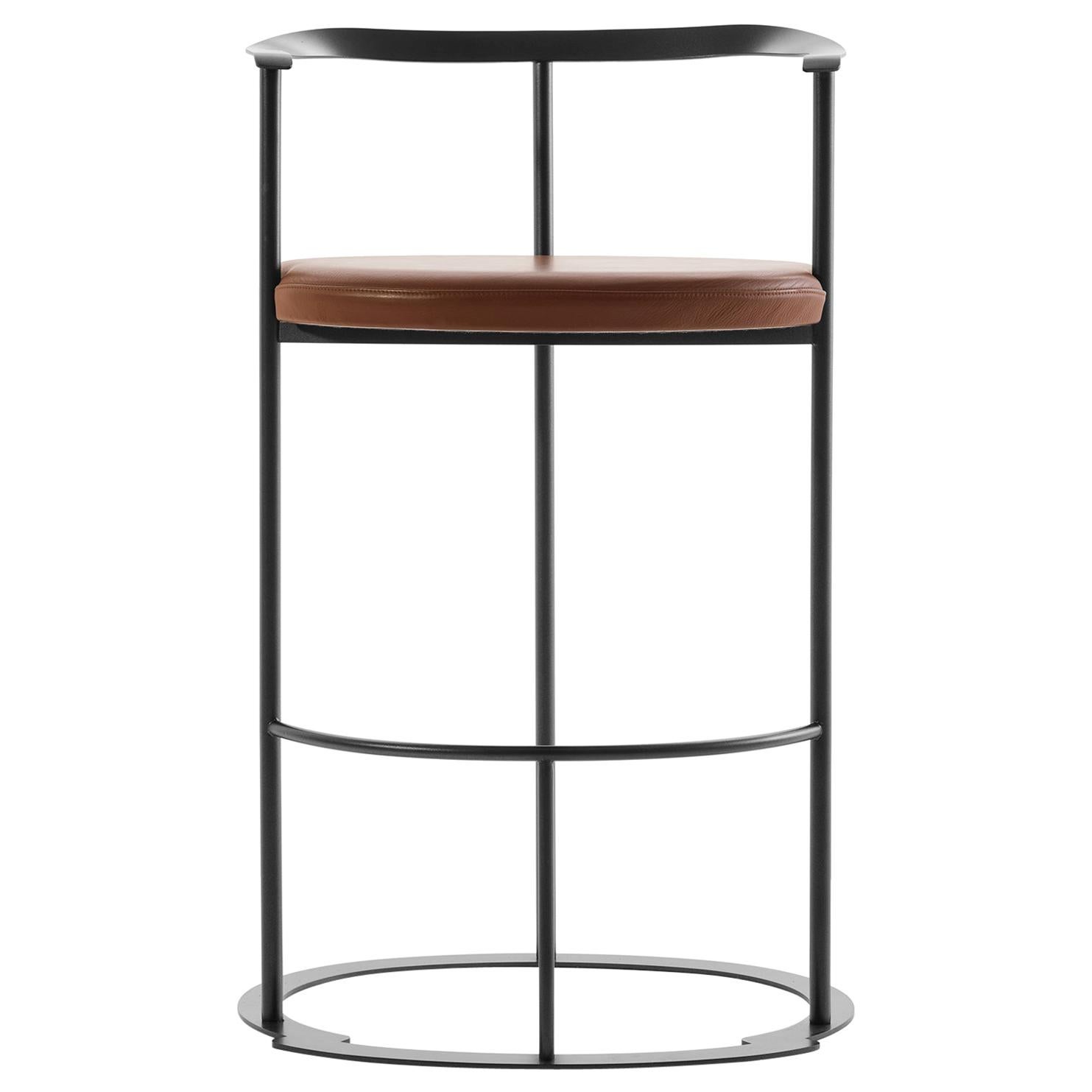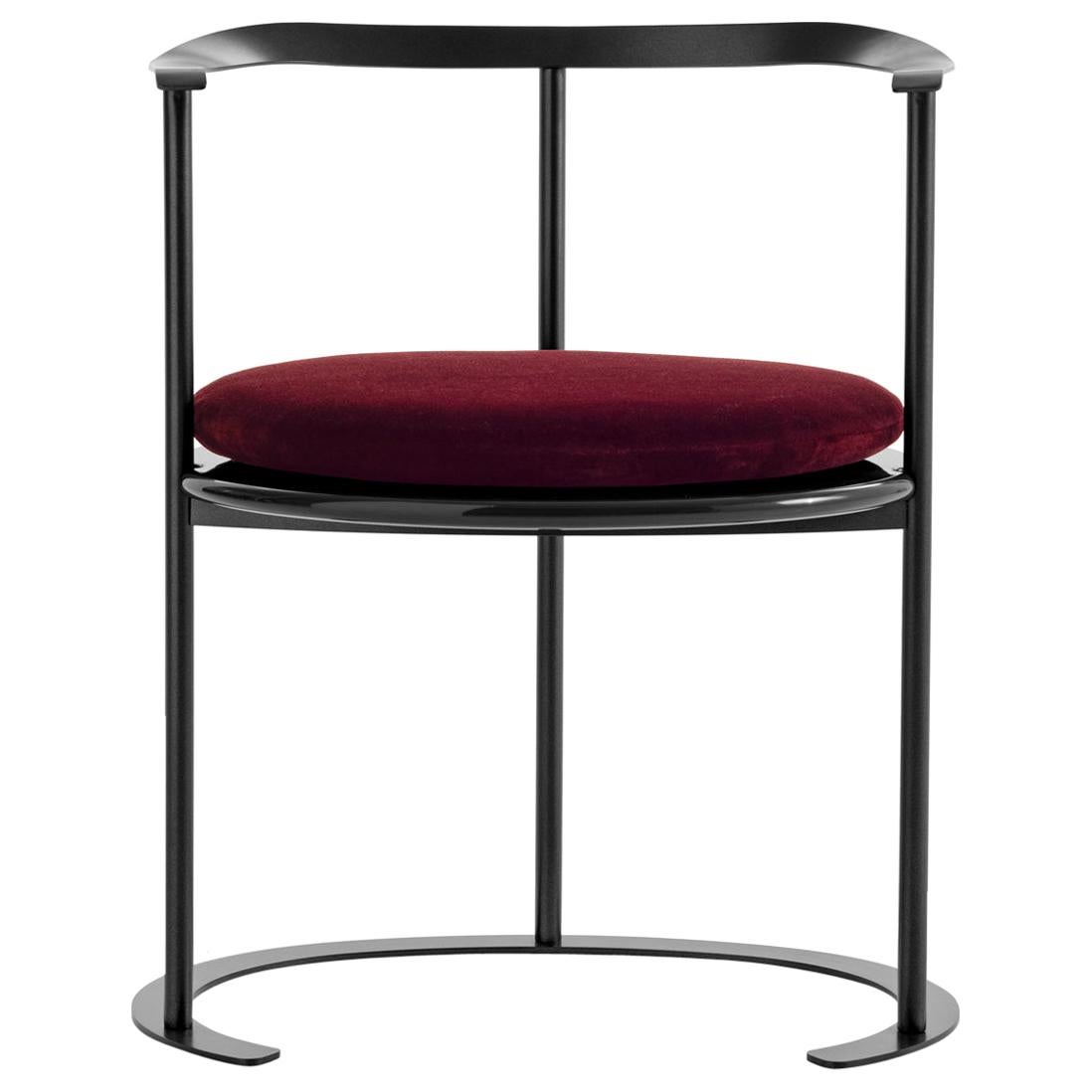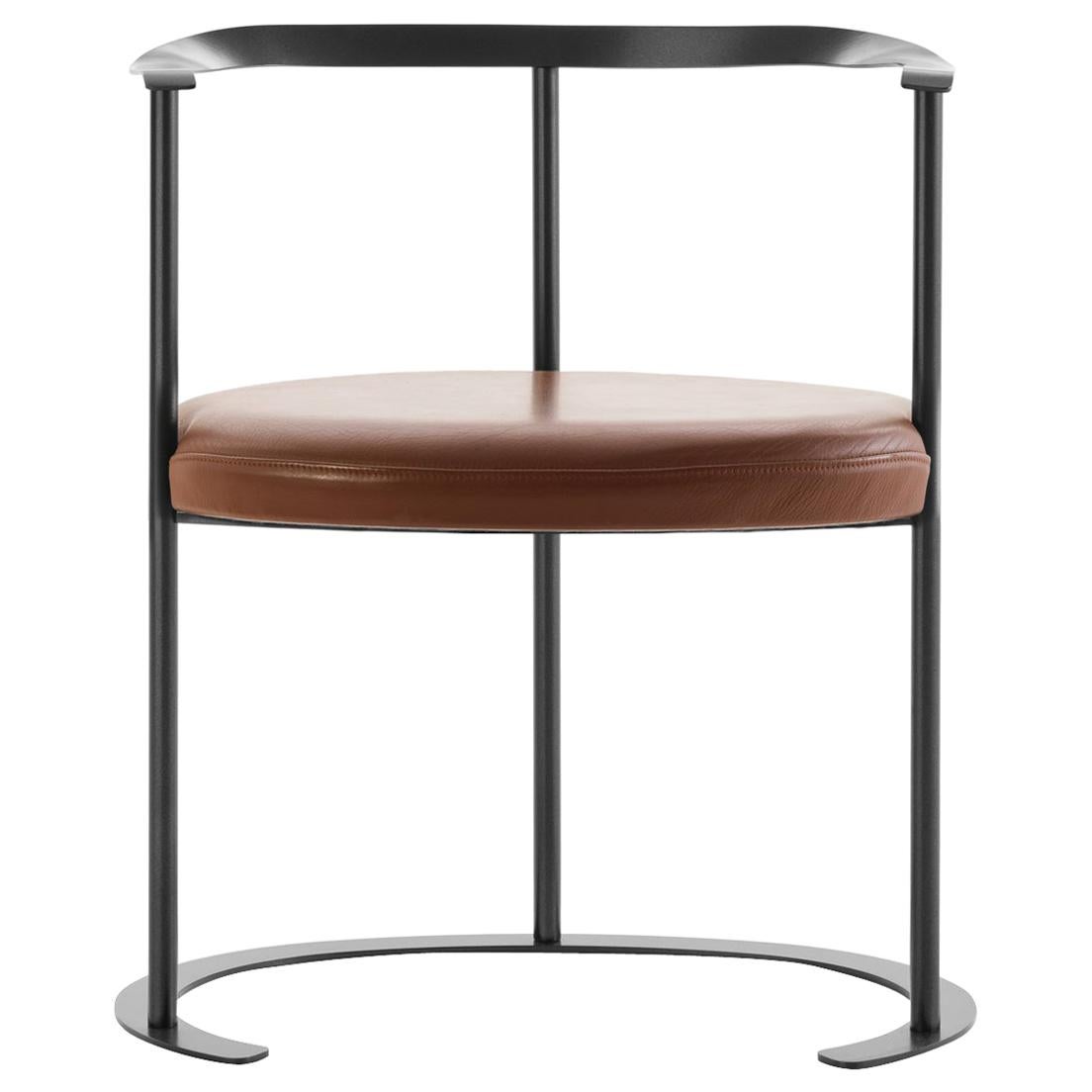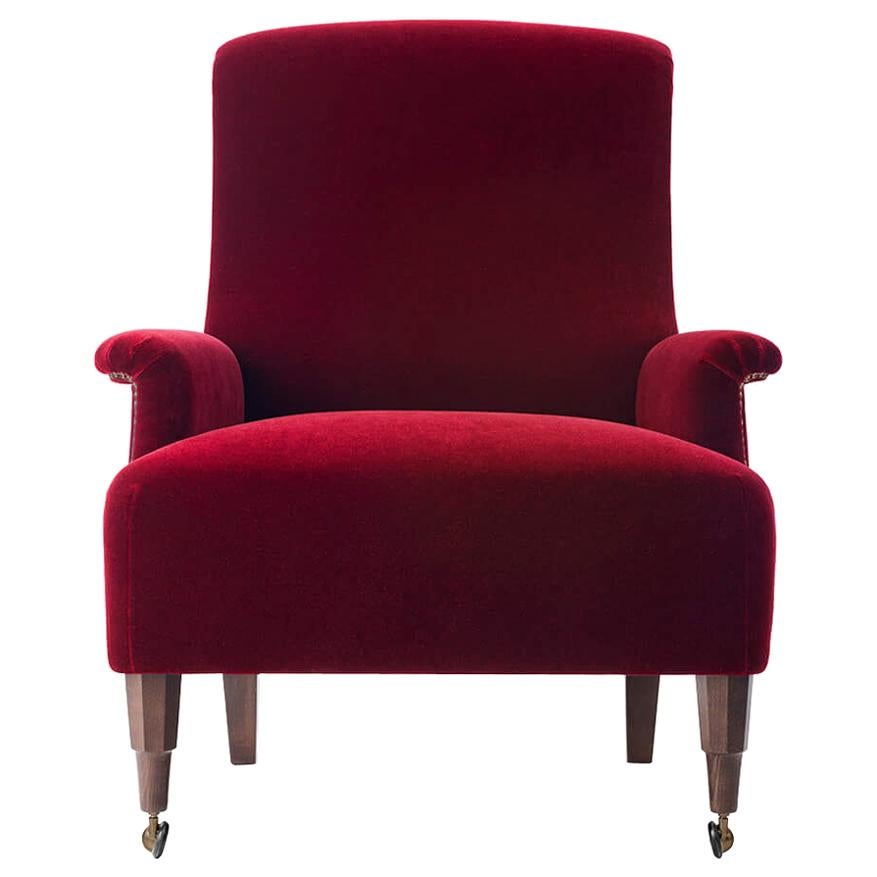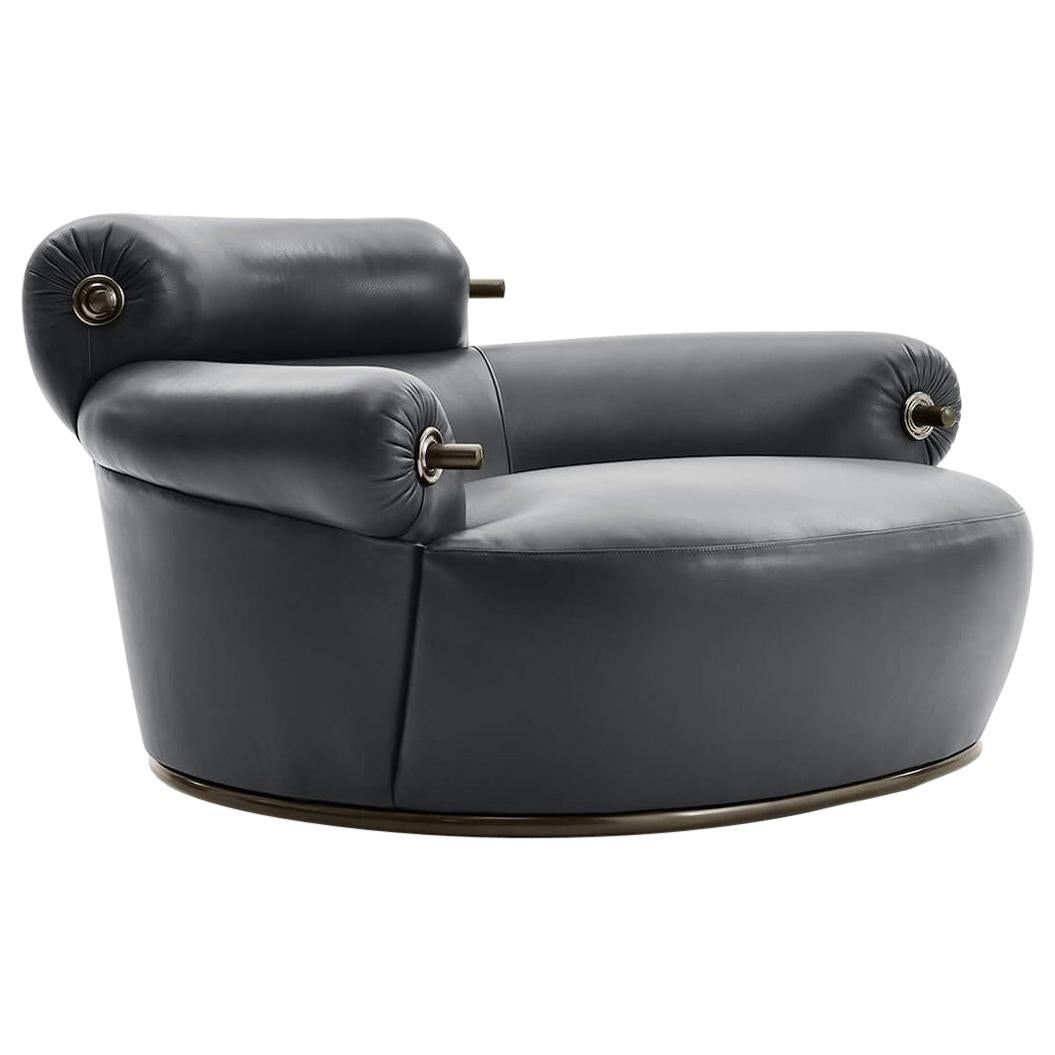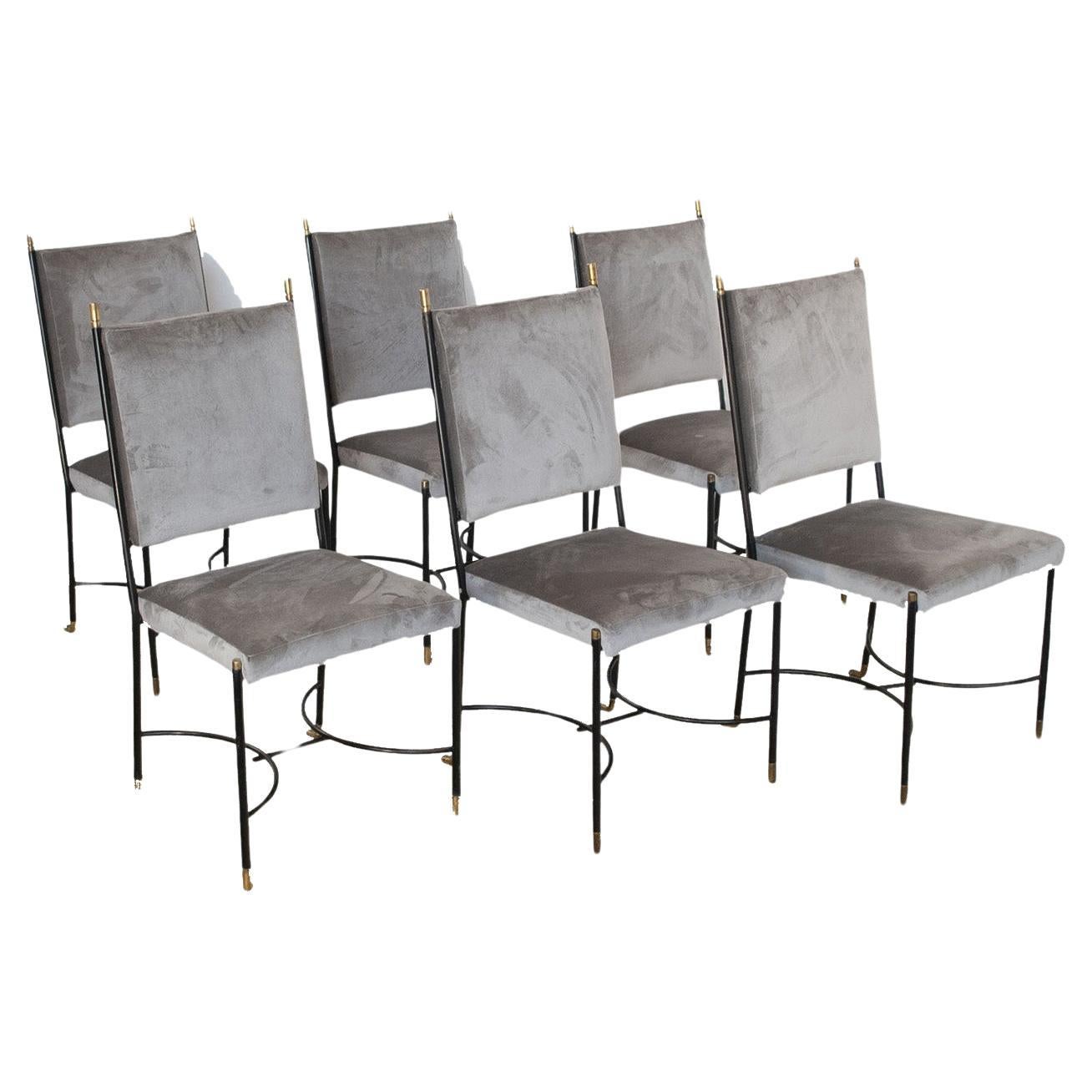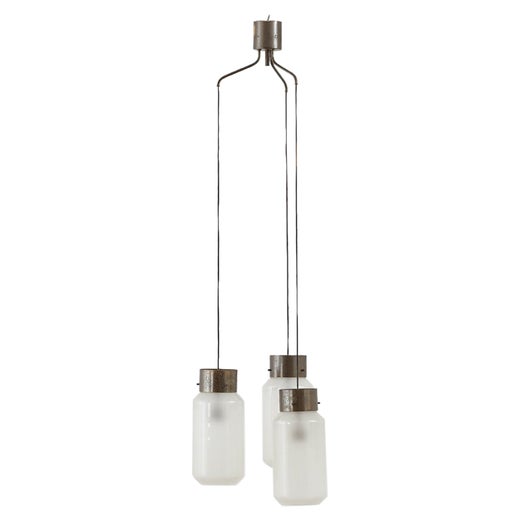Luigi Caccia Dominioni Set of Six Catilina Chairs in Steel and Fabric Azucena
About the Item
- Creator:Luigi Caccia Dominioni (Designer),Azucena (Manufacturer)
- Design:
- Dimensions:Height: 27.56 in (70 cm)Width: 22.84 in (58 cm)Depth: 18.51 in (47 cm)Seat Height: 15.75 in (40 cm)
- Sold As:Set of 6
- Style:Mid-Century Modern (Of the Period)
- Materials and Techniques:
- Place of Origin:
- Period:
- Date of Manufacture:Late 1950s
- Condition:Wear consistent with age and use.
- Seller Location:Montecatini Terme, IT
- Reference Number:1stDibs: LU5304227284922
Luigi Caccia Dominioni
To join the centenarian club is a remarkable feat in itself, but to live for over a century and leave a lasting impact on the world of Italian mid-century modern furniture design — just as pioneering industrial designer and architect Luigi Caccia Dominioni had — is extraordinary. His vintage table lamps, coffee tables, chairs and other furnishings are demonstrative of exemplary technique, theory and quality workmanship — all characteristics of the Milanese designer’s signature style.
Caccia Dominioni graduated from Milan’s oldest university, the Polytechnic University of Milan, in 1936. A leading center for design innovation during the first half of the 20th century, the institution’s alumni includes notable Italian architects and designers such as Gio Ponti, Vittoriano Vigano and brothers Livio and Pier Giacomo Castiglioni. In 1937, the Castiglioni brothers and Caccia Dominioni opened a multi-award winning studio together and presented groundbreaking designs for radios in Bakelite shells at the 1940 Milan Triennial.
The Second World War forced Caccia Dominioni to pause his professional ambitions in order to serve in the Italian military, and the postwar years saw much of his most esteemed designs take shape. In 1947, alongside Ignazio Gardella and Corrado Corradi Dell’Acqua, Caccia Dominioni founded the furniture manufacturing company Azucena, where he designed iconic pieces such as the Catalina chair and a range of lighting that includes the Lp10 wall light, the Lsp3 wall light and the Lsp6 flush mount light.
Like a fine Italian wine, Caccia Dominioni got even better with time. He collaborated with the likes of Olivari and Lualdi well into his 80s, debuting legendary pieces such as the C.d.o. chair and the Super door. And while many of his celebrated architectural works materialized during the 1950s and 1960s — such as the Teatro Filodrammatici and the Galleria Strasburgo — one of Caccia Dominioni’s best known structures, the fountain in Milan’s Piazza San Babila, was built near the end of 20th century when the designer was 83 years old.
Caccia Dominioni was a winner of the Compasso d’Oro, one of the oldest and most prestigious awards in the design industry. When he died at 103 in 2016, he left behind an exceptional legacy of furniture design and architectural innovations.
Find vintage Luigi Caccia Dominioni chandeliers and pendants, floor lamps, armchairs and other furniture on 1stDibs.
Azucena
Vintage Azucena furniture is elegant and inviting — the esteemed mid-century Milanese manufacturer’s wall lights, armchairs and side tables, which are marked by simple symmetry and thoughtfully contrasting materials, can likely be found in the living rooms of design lovers all over Italy.
Azucena was founded in 1947 by three leading figures of 20th-century Italian architecture: Luigi Caccia Dominioni, Ignazio Gardella and Corrado Corradi Dell’Acqua. The trio initially established Azucena in order to furnish the interiors of buildings they’d designed but found a robust business opportunity in manufacturing individual pieces from those collections for postwar consumers. And as the company founders borrowed the brand name from a conniving character in the Giuseppe Verd opera Il Trovatore, it is appropriate, then, that the furniture for which Azucena is known is practical but exudes a hint of playfulness.
The best of Italian modernism combines cheekiness and bold functionality with provocative and thoughtful design, and Azucena is deeply rooted in that tradition. While its brass-and-walnut mid-century-modern-era dining tables and stackable coffee tables — created by the likes of Dell’Acqua and Vico Magistretti — are exceptionally unobtrusive in small spaces and framed in clean lines, Dominioni designed chunky, enveloping armchairs during the 1970s upholstered in striking red fabric.
Among Azucena's most successful and iconic designs is also Dominioni's most famous piece of furniture: the minimalist Catalina chair. After it debuted at the Milan Triennial in 1957, the Catalina chair, with its generously curving enameled steel frame and plush leather cushion, became an instant sensation. Dominioni’s other enduring designs for Azucena include the Monachella lamp, the ABCD armchair and the versatile Cilindro ottoman.
Italian furniture manufacturer B&B Italia acquired Azucena in 2018 and has reissued a number of designs from the legendary brand’s portfolio, such as the Imbuto lamp, the Catalina armchair and the Cavalletto table.
On 1stDibs, find vintage Azucena lighting, tables, seating and more.
- ShippingRetrieving quote...Ships From: Florence, Italy
- Return PolicyA return for this item may be initiated within 7 days of delivery.
- Mario Botta Set of Six 605 Quinta Chairs in Black Lacquered Steel by Alias 1980By Mario Botta, AliasLocated in Montecatini Terme, ITSet of six 605 Quinta chairs with a black steel rod frame seat and back in bent perforated sheet metal. Designed by Mario Botta for Alias in 1985 (This chair is no longer in production). The Quinta chair it's an architecture you can sit on, this design clearly shows the inspiration of iconic designer as Le Corbusier, Louis Kahn, and Carlo Scarpa, an exemplary of this iconic chair is also exhibited at the Museum of Modern Art. Mario Botta was born in 1943 in Mendrisio. After working as an apprentice draughtsman for the Lugano-based architect Tita Carloni, he moved first to Milan and then to Venice, where he enrolled at the department of Architecture at the IUAV. He completed his degree in 1969 with a thesis tutored by Carlo Scarpa – after having met Le Corbusier and Louis Kahn, who were later to be sources of inspiration – and returned to Switzerland to open his own professional firm, which at the time dealt mainly with detached family private homes. These included the villas in Riva San Vitale (1971-1973), Ligornetto (1975-1976) and Morbio Superiore (1982-1983), in which Botta treated the theme of the home as a refuge, which protects and reassures its inhabitants. These were buildings with a character that was ironic and, in a certain sense, monumental, obtained for example (in the case of Morbio) through rigorous symmetrical compositions and a particular use of raw concrete blocks set in a linear pattern and alternated with strips of silvered brick which, on the contrary, were set at 45 degrees. Partially dug into the hillside, the villa was also characterised by a theme which was particularly dear to Botta and which had already been explored in Riva San Vitale; the net distinction between solids and voids, the latter appearing to have been dug out of the building. Between 1980 and 1990, Botta associated with artists and intellectuals from all walks of life and took numerous long trips abroad. Together with Gabriele Basilico and Edoardo Sanguinetti, he published “La Casa Rotonda”, and he became friends with Max Huber, Nicki de Saint Phalle, Dante Isella, Harld Szeemann, Robert Frank and Alberto Flammer. In 1986, the MoMA in New York dedicated a solo exhibition to his work, and the Swiss architect received his first contracts for public buildings and from abroad, debuting with the Cultural Centre in Chambéry (1984-1987). In Japan, on a challenging triangular lot of only one hundred and sixty square metres, a space which remained from the opening of a new highway, Botta built a small building which, with its clarity and strength of image, attempted to stand out in the midst of the chaos that surrounded it, thanks to a thick masonry curtain raised on the main façade, in which slabs of grey marble are crossed with horizontal fissures which erode the angles and cancel the perception of the number of floors which make up the museum. The church of Mongo, on the other hand, was the first step in a long series of places of worship, including designs for the churches of Pordenone (1987-1992) and Sartiana (1987-1995), for the cathedral of Evry (1988-1995), for the basilica of Santa Maria degli Angeli on Mont Tamaro (1990-1996, for the Giovanni XXII church in Seriate (1994-2000) and for the Cymbalista synagogue in Tel Aviv (1996-1998). In each of these, light plays a predominant role as a prime generator of space and a measure for the definition of time that passes with the various phases of the day, the months and the seasons. Light is, however, the main symbolic element, representing through its variations the uneasiness of humankind in the face of divine perfection. In this same period, the scheduling for the construction of a new School of Architecture, the Mendrisio Academy, took place. Inaugurated in 1996, it offered an alternative approach to teaching in contrast to the Swiss University system, in which an important role is played by humanistic subjects and by a copious group of well-known international professors: from Rykwert to Benevolo, Burkhart, Campos Baeza, Dal Co, Frampton, Mendes da Rocha...Category
Vintage 1980s Italian Post-Modern Chairs
MaterialsSteel, Sheet Metal
- Tobia & Afra Scarpa Set of Six Dialogo Chairs in Leather and Wood by B&B 1970sBy Afra & Tobia Scarpa, B&B ItaliaLocated in Montecatini Terme, ITSet of six Dialogo chairs with structure in black lacquered wood, seat and back in leather and metal details. Designed by Tobia & Afra Scarpa and produced by B&B Italia in 1970s Th...Category
Vintage 1970s Italian Mid-Century Modern Chairs
MaterialsLeather, Wood
- Set of Six Dining Chairs in Wood by Sineo Gemignani Italian Manufacture 1940sBy Sineo GemignaniLocated in Montecatini Terme, ITA very rare set of six dining chairs entirely made in curved wood, this set was designed by the Italian artist Sineo Gemignani and manufactured in Ital...Category
Vintage 1940s Italian Mid-Century Modern Chairs
MaterialsWood
- Ilmari Tapiovaara Set of Six Dining Chairs in Leather by Permanente Mobili CantùBy La Permanente Mobili Cantù, Ilmari TapiovaaraLocated in Montecatini Terme, ITSet of six dining chairs with wooden frame, seat and back in leather designed by Ilmari Tapiovaara and produced by La Permanente Mobili Cantù in 1950s. This set of chairs presents ...Category
Vintage 1950s European Mid-Century Modern Chairs
MaterialsLeather, Wood
- Vico Magistretti Set of Six Black Carimate Chairs by Cassina 1960sBy Cassina, Vico MagistrettiLocated in Montecatini Terme, ITSet of six Carimate chairs with structure in black lacquered beech wood and woven straw seat, designed by Vico Magistretti and produced by Cassina in the 1960s. The Carimate chair ...Category
Vintage 1960s Italian Mid-Century Modern Chairs
MaterialsStraw, Beech
- Giotto Stoppino Set of Six White Alessia Chairs by Driade 1970s ItalyBy Giotto Stoppino, DriadeLocated in Montecatini Terme, ITSet of six Alessia chairs with legs in tubular chromed metal and seats in white ABS, designed by Giotto Stoppino and manufactured by Driade in the 1970s. (Manufacturer's brand visi...Category
Vintage 1970s Italian Mid-Century Modern Chairs
MaterialsMetal
- Azucena Catilina Upholstered Stool by Luigi Caccia DominioniBy Azucena, Luigi Caccia DominioniLocated in Novedrate, ITFrom the moment it was first presented at the XI Triennale in Milan in 1953, Catilina became one of Luigi Caccia Dominioni’s classics. He loved the design so much that guests in his studio would settle down by his desk to chat in these chairs. At first glance you would be forgiven for assuming this unusual object to be unfinished. Instead Caccia Dominioni created both a new chair and defined how to sit in it. Catilina is not designed for relaxation and letting go but for thoughtfulness and elegance. You could almost be transported back to ancient Rome ensconced in the seat of the Roman senator, Lucio Sergio Catilina, after whom the chair is named. In turn, the chair harks back to medieval thrones...Category
21st Century and Contemporary Italian Modern Stools
MaterialsLeather
- Azucena Catilina Small Armchair with Seat Cushion by Luigi Caccia DominioniBy Luigi Caccia Dominioni, AzucenaLocated in Novedrate, ITFrom the moment it was first presented at the XI Triennale in Milan in 1953, Catilina became one of Luigi Caccia Dominioni’s classics. He loved the design so much that guests in his studio would settle down by his desk to chat in these chairs. At first glance you would be forgiven for assuming this unusual object to be unfinished. Instead Caccia Dominioni created both a new chair and defined how to sit in it. Catilina is not designed for relaxation and letting go but for thoughtfulness and elegance. You could almost be transported back to ancient Rome ensconced in the seat of the Roman senator, Lucio Sergio Catilina, after whom the chair is named. In turn, the chair harks back to medieval thrones...Category
21st Century and Contemporary Italian Modern Armchairs
MaterialsMohair
- Azucena Catilina Small Armchair with Upholstered Seat by Luigi Caccia DominioniBy Luigi Caccia Dominioni, AzucenaLocated in Novedrate, ITFrom the moment it was first presented at the XI Triennale in Milan in 1953, Catilina became one of Luigi Caccia Dominioni’s classics. He loved the design so much that guests in his studio would settle down by his desk to chat in these chairs. At first glance you would be forgiven for assuming this unusual object to be unfinished. Instead Caccia Dominioni created both a new chair and defined how to sit in it. Catilina is not designed for relaxation and letting go but for thoughtfulness and elegance. You could almost be transported back to ancient Rome ensconced in the seat of the Roman senator, Lucio Sergio Catilina, after whom the chair is named. In turn, the chair harks back to medieval thrones...Category
21st Century and Contemporary Italian Modern Armchairs
MaterialsLeather
- Azucena ABCD Armchair by Luigi Caccia DominioniBy Azucena, Luigi Caccia DominioniLocated in Novedrate, ITThe greatest designers know only too well that success lies in the detail. Luigi Caccia Dominioni took a forensic interest in all his work,whether a large-scale architectural project or a piece of furniture. The ABCD armchair is the acme of design and it continues to surprise us today. Through subtle changes to Caccia Dominioni’s original concept and drawing, this very traditional reading chair has been updated to meet the needs of contemporary living. ABCD is at once classic and timeless - memorable for its fine details. It is easy to move thanks to two small wheels yet retains its stability. The back legs differ in shape to the front ones in a playful nod to the chair’s square, octagonal and circular forms that are not apparent at first glance. The upholstery studs...Category
21st Century and Contemporary Italian Modern Armchairs
MaterialsMohair
- Azucena Toro Armchair by Luigi Caccia DominioniBy Azucena, Luigi Caccia DominioniLocated in Novedrate, ITDesigned for the Monticello country club on the outskirts of Milan, the Toro sofa and armchair can be admired from every angle and confidently take up centre stage. Why Toro - bull in Italian? Because you can literally “take it by the horns” thanks to the metal frame emerging through the padding. The seat arms terminate in handles that allow you to move and rotate the furniture with consummate ease. The Milanese country club guests used to configure and reconfigure the seating as required, moving them closer together to converse or further apart for peace and quiet. These bulls are docile and easy to handle. More like Sitting Bull, the legendary Sioux leader who features in so many films and Italian cartoon...Category
21st Century and Contemporary Italian Modern Armchairs
MaterialsLeather
- Luigi Caccia Dominioni set of the chairs from the sixtiesBy Luigi Caccia DominioniLocated in bari, ITSet of two Regency-style chairs by Luigi Caccia Dominioni iron frame with brass ferrules in gray velvet 1960s.Category
Vintage 1960s European Mid-Century Modern Chairs
MaterialsMetal, Brass
